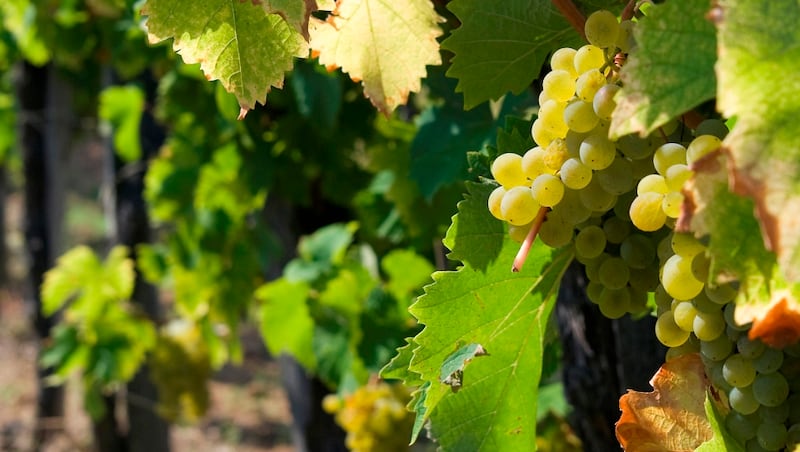France has provided us with most of the world’s noble grapes; the same varieties that are responsible for the great wines of Bordeaux, Burgundy and the Rhône are among the most widely planted in the New World. But one grape has remained relatively obscure, rarely receiving due recognition except from a small dedicated band of followers.
The most adaptable of all grape varieties, used in dry, medium-dry, exquisitely sweet or sparkling wines, Chenin Blanc can do it all. Arguably only Riesling can match it for versatility and quality. Many professionals would argue that Chenin deserves a place alongside Riesling and Chardonnay (and ahead of Sauvignon Blanc) as one of the great noble white grape varieties.
Chenin Blanc is at home in the Loire valley, more specifically the central part. Its lack of fame might be explained by its surly youth. Tasting very young Chenin can be challenging; lots of acidity and very little in the way of fruit. It can certainly be very bland if over-cropped, very acidic if unripe, and does not lend itself to cheap wines, in the Loire valley at least. In the past it needed years to blossom, slowly revealing subtle, complex notes of honey, quince and nuts. Through improved viticulture and by picking later, modern French winemakers have managed to coax a lot more flavour out of young Chenin Blanc, and most are now far more approachable. Even then, Chenin Blanc is never too showy or exuberant, and sometimes still steely and austere. Its high acidity makes it very useful in sparkling wines and also enables the wines to age seemingly forever; a 50-year-old Vouvray, dry or sweet, can be wonderful.

There are Loire producers who make stunning dry white wines, some of which have featured on this page before. But Chenin Blanc is also responsible for some of the greatest dessert wines of all. While sweet wine producers around the world vie to make the richest, heaviest wines, the Loire versions have a lightness, freshness and perfect balance that makes you want a second glass. If Chenin is ever to be appreciated as one of the world’s noble grape varieties, it will be surely be through its dessert wines.
Elsewhere, only two other countries have taken to Chenin Blanc. It first arrived in South Africa in the late 17th century, brought either by French Huguenots or Jan van Riebeeck. Known locally as Steen, at one time it accounted for a third of all plantings in South Africa. Perhaps because of this ubiquity, it has only recently been taken seriously by South African winemakers.
For many years it was seen as useful in blending (Chenin keeps its acidity even in hot climates) or as cheap plonk. However, in the past decade or so a growing band of producers have started to make some seriously good dry white wines.
At the same time, there are now some very good inexpensive Chenins available too. Sadly, in my tasting most did not show very well, possibly because they were from the 2011, 2010 or even 2009 vintage. However the pricier versions were very good indeed.
Ken Forrester who has championed the grape in South Africa, produces some of the finest examples under his own name, as well as Tesco’s Finest Chenin Blanc. Alongside him producers such as de Trafford, Mullineux and Raats are worth looking out for.
I also tasted a Chenin Blanc from Mexico and another from Australia, the very attractive Coriole from Wines Direct. The other large producer of Chenin outside France is California, but here again most of it is grown in the volume-orientated Central Valley and disappears into cheap “jug wine”.
Sparkling Chenin from both South Africa and France can still be found on the shelves of most supermarkets. If they have been aged a few years, they can offer a delicious alternative to Champagne. From the Loire, it is worth looking out for the crémants and other sparkling wines, the dry whites of Savennières, Vouvray, Anjou, Saumur and Touraine, and the superb sweet wines of Coteaux du Layon, its grands crus of Bonnezeaux and Quarts de Chaume, as well as Montlouis and Vouvray again.
If your taste runs to the New World, the South African wines mentioned are available through kinnegar.com a company that has made South Africa its speciality. Either way, Chenin Blanc is certainly worth a try.
jwilson@irishtimes.com











